Get my best tips and tricks for painting trim white, plus my favorite paint colors for white trim! This one simple update will instantly elevate any space.
Painting trim white is one of my favorite home updates, because it is so quick, easy, and budget friendly. It also makes a huge impact on a space!
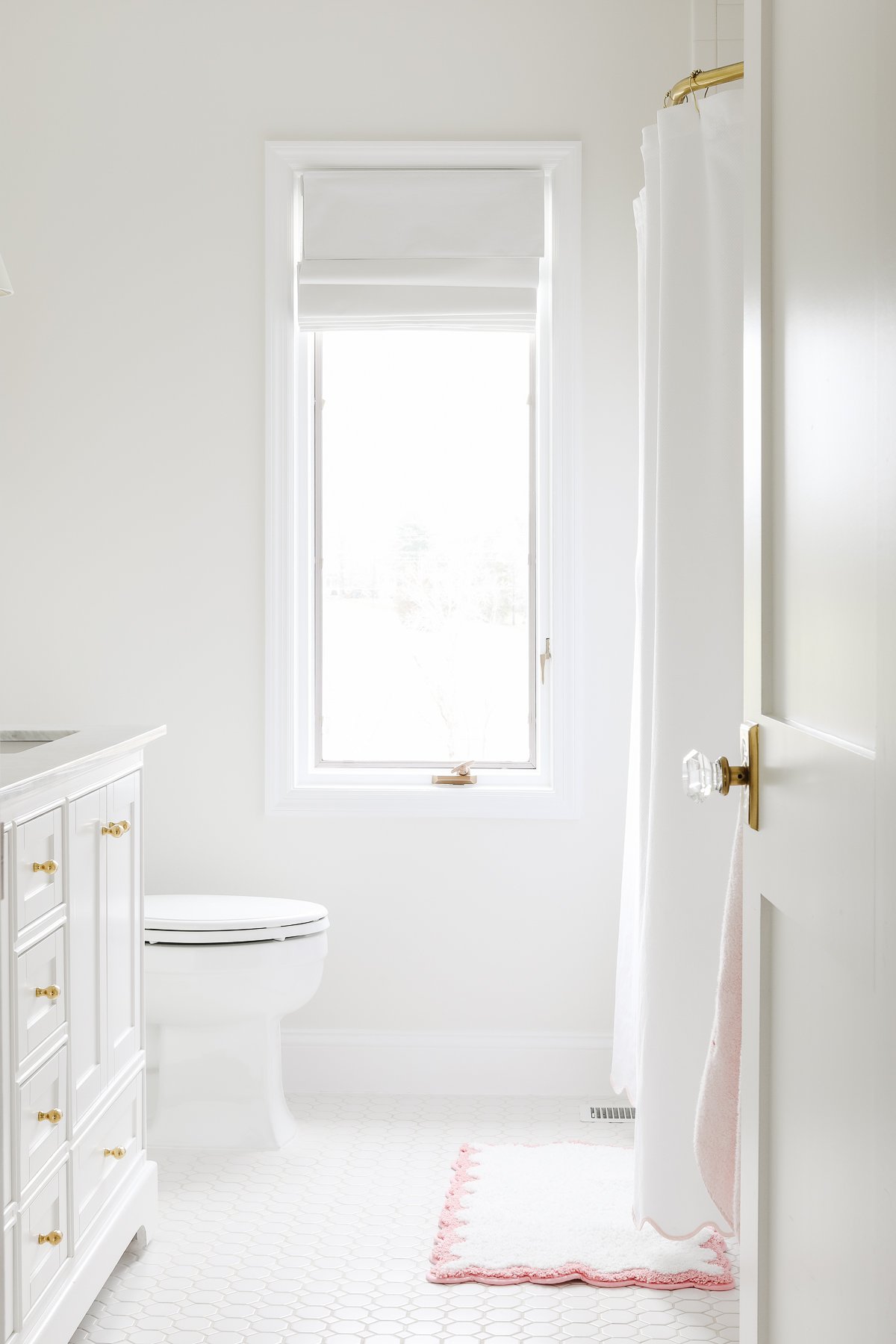
My husband and I have made over several homes. One of the first jobs I tackled in each one was painting, including giving the trim a nice coat of white paint. I loved the way white trim made each space feel clean and fresh.
I’ve started Painting Walls and Trim the Same Color of white, because it creates spaces that feels more cohesive, open, and welcoming. And of course, I love the subtle effect of white on white.
Through all of our remodeling, I’ve learned some helpful tips – everything from how to paint trim white, how to Paint Over Stained Wood Without Sanding, and How to Choose the Best Ceiling Paint and The Best Trim Paint.
Keep reading for my best tips and tricks for painting trim white, plus all of my favorite white paints!

Painting Trim White
Clean white trim instantly elevates a space and makes it feel brighter. A fresh coat of white paint is the perfect way to showcase your doorways, windows, and crown moulding. After all, creating a beautiful home is in the details!
It should come as no surprise that paint is one of my tricks to make an old home feel new and to add light in a dark room. Painting trim white is a lovely way to brighten and freshen up a space, especially when it’s paired with soft, neutral colors.
I’ve said it before – neutral decorating doesn’t have to mean boring! I think it’s the perfect backdrop to create a peaceful, welcoming home.
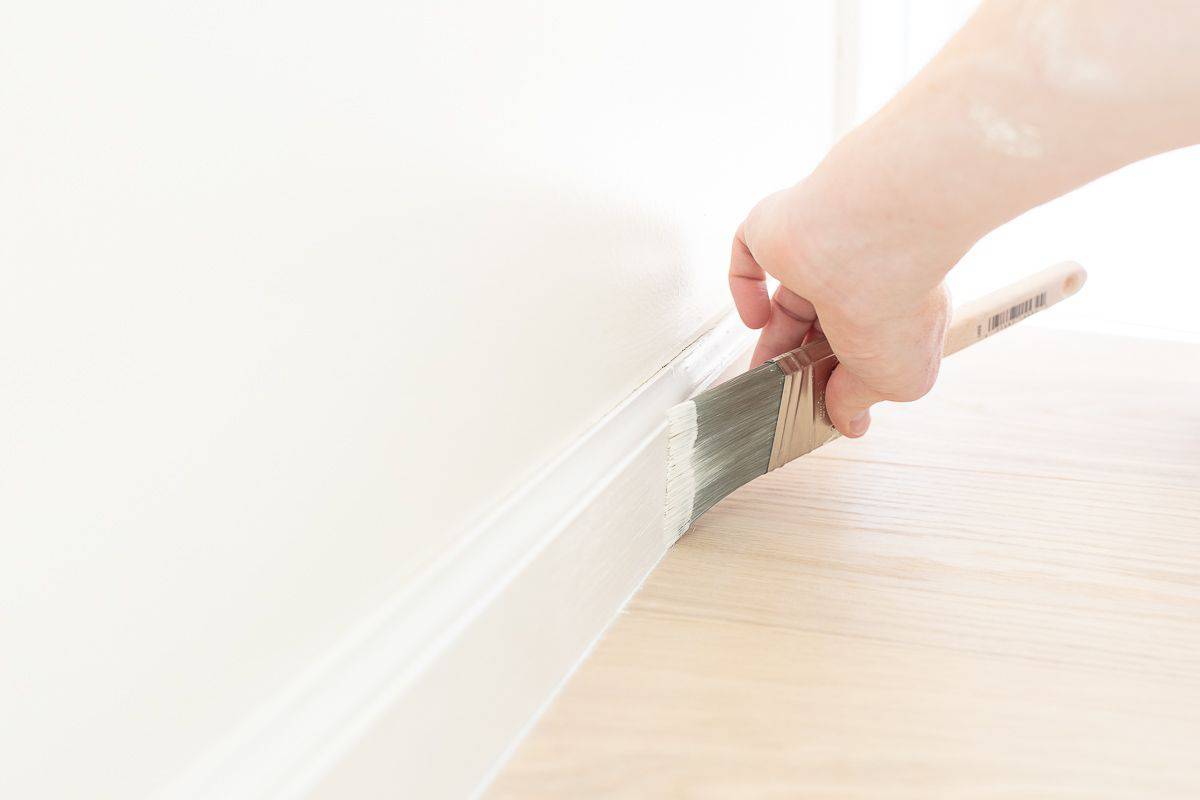
White Trim Paint Colors
Of course, anyone who has tried choosing a white paint knows it isn’t quite as easy as it sounds. There are so many different whites! In other words, there are warm whites and cool whites, each with its own undertones that will affect the way your eye sees the final color.
Don’t worry – I’ve got you covered. I tend to prefer whites with warm undertones, because I like the warmth and softness that they bring to a space. But here is a list of all of my favorite go-to whites – warm and cool – and why I love them.
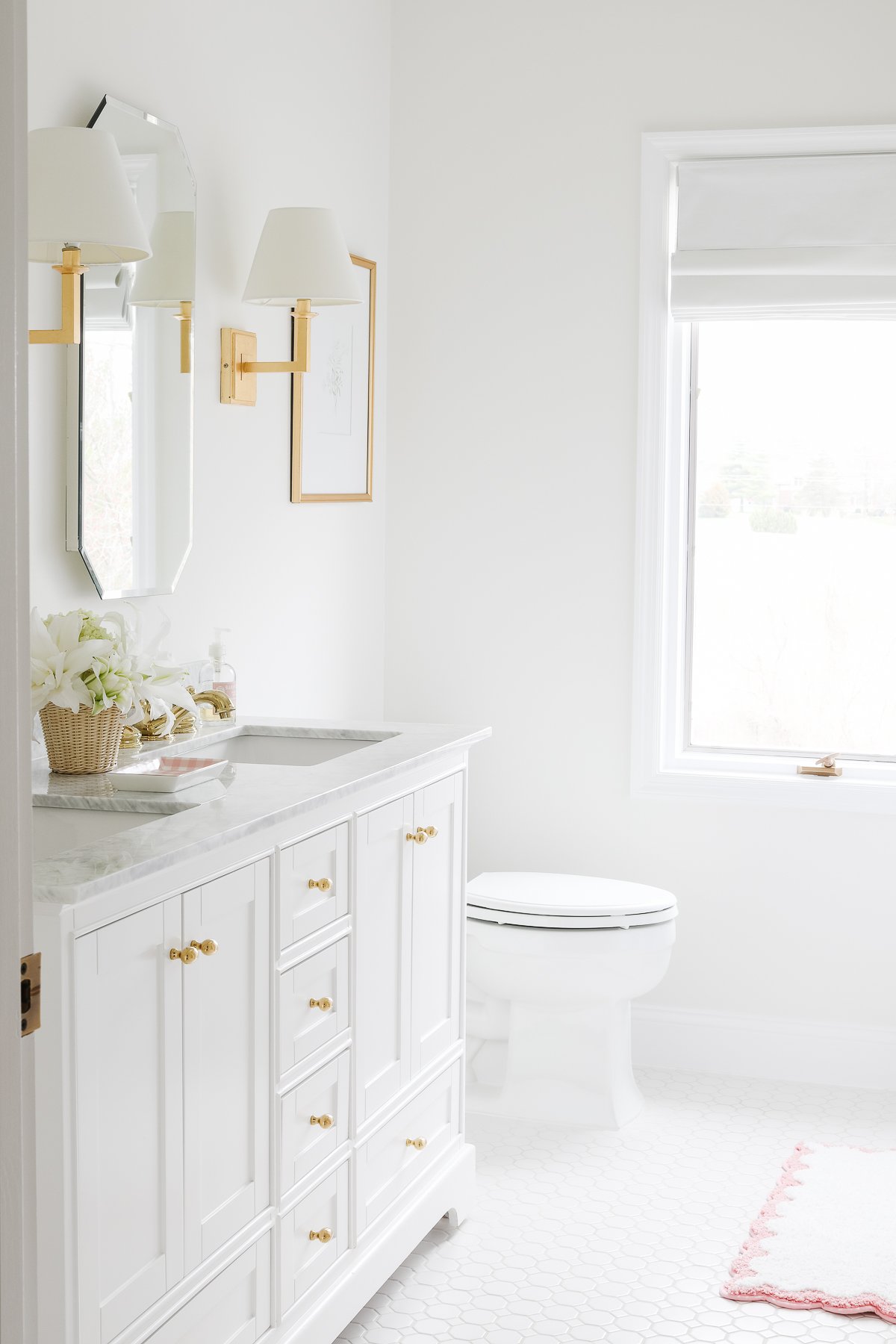
Warm Whites
- Benjamin Moore White Dove – a warm, soft white with a hint of greige undertone
- Benjamin Moore Navajo White – more yellow undertone than most whites, so it can be quite warm in some lights
- Benjamin Moore Simply White – A favorite warm white, I painted the entire interior of our modern lake house in this color!
- Sherwin Williams Everyday White – a perfect creamy white
- Sherwin Williams Zurich White – this warm white is almost more like a neutral because it’s not too warm or too cool, with a slight grey/greige undertone
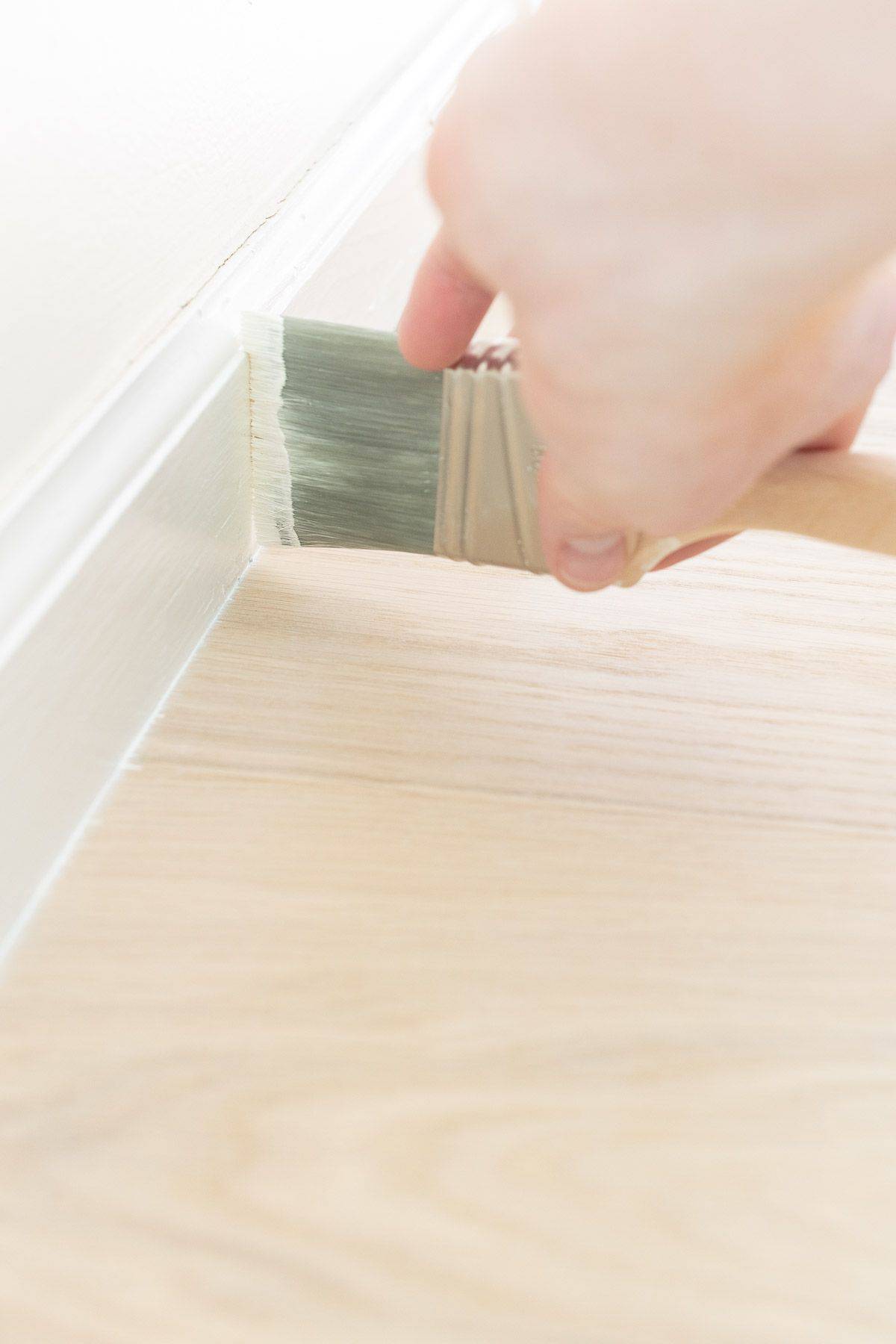
Cool Whites
- Benjamin Moore Decorator’s White – a white with a touch of grey undertones, that in certain lights can soften without looking creamy
- Benjamin Moore Chantilly Lace – a crisp, clean white with some grey/blue undertones
- Sherwin Williams Extra White – just like it sounds, this white is extra white, perfect for a more modern look
Materials to Paint Wood Trim White
- Sand Paper (80, 100, 120 grit) or Liquid Deglosser, recommended
- Cleaner and Cleaning Rag
- Wood Filler or Spackling
- Caulk
- Painters Tape
- 2″ Angled Brush
- Paint Tray
- Primer
- Oil or Water-Based Trim Paint – I recommend a semi-gloss finish (learn more about Paint Sheens).

How to Paint Trim White
- Sand or degloss (for unpainted wood trim) – Follow the instructions on the liquid sandpaper or deglosser. Typically you’ll use a clean cloth to wipe the trim down with the deglosser, then let it sit for several minutes to “rough up” the surface.
- Thoroughly clean trim – Using a clean cloth and all-purpose cleaner, clean the trim well. Then dry using a clean cloth or let air dry.
- Fill Holes – Using your fingers or a small spackle knife, fill any holes with wood filler or lightweight spackling. Let dry completely, then sand smooth using 120 grit sandpaper. Tip: Using a lightweight spackle that goes on pink and dries white makes it easy to know when it’s ready for paint.
- Caulk – Use a paintable caulk to fill any seams or cracks in the trim or between the trim and walls. Run a small bead of caulk, then smooth it out with your finger or a wet cloth. Let dry completely.
- Painters Tape – Tape around all edges using painters tape, if desired.
- Prime – If you’re painting over dark wood trim, I recommend using a stain-blocking primer such as Kilz or Zinzer. These will keep the wood grain from showing through. Prime completely, making sure to watch for any drips. Let dry.
- Paint – Paint using a high-quality semi-gloss trim paint. I love Sherwin Williams Pro-Classic line, because it goes on smoothly and hides brush marks, dries to a hard finish, and is durable and easy to clean. Paint using long strokes in the direction of the wood grain.
- Sand Imperfections – Once paint is dry, check for any imperfections, such as drips. If needed, sand lightly with 80 grit sandpaper and wipe clean from dust.
- Apply Second Coat – Paint a second coat in the same manner as the first. Remove any painters tape before the paint has fully dried, to keep paint from tearing. Tip: Keep a box knife nearby to score between the edge of the trim and tape, if needed.
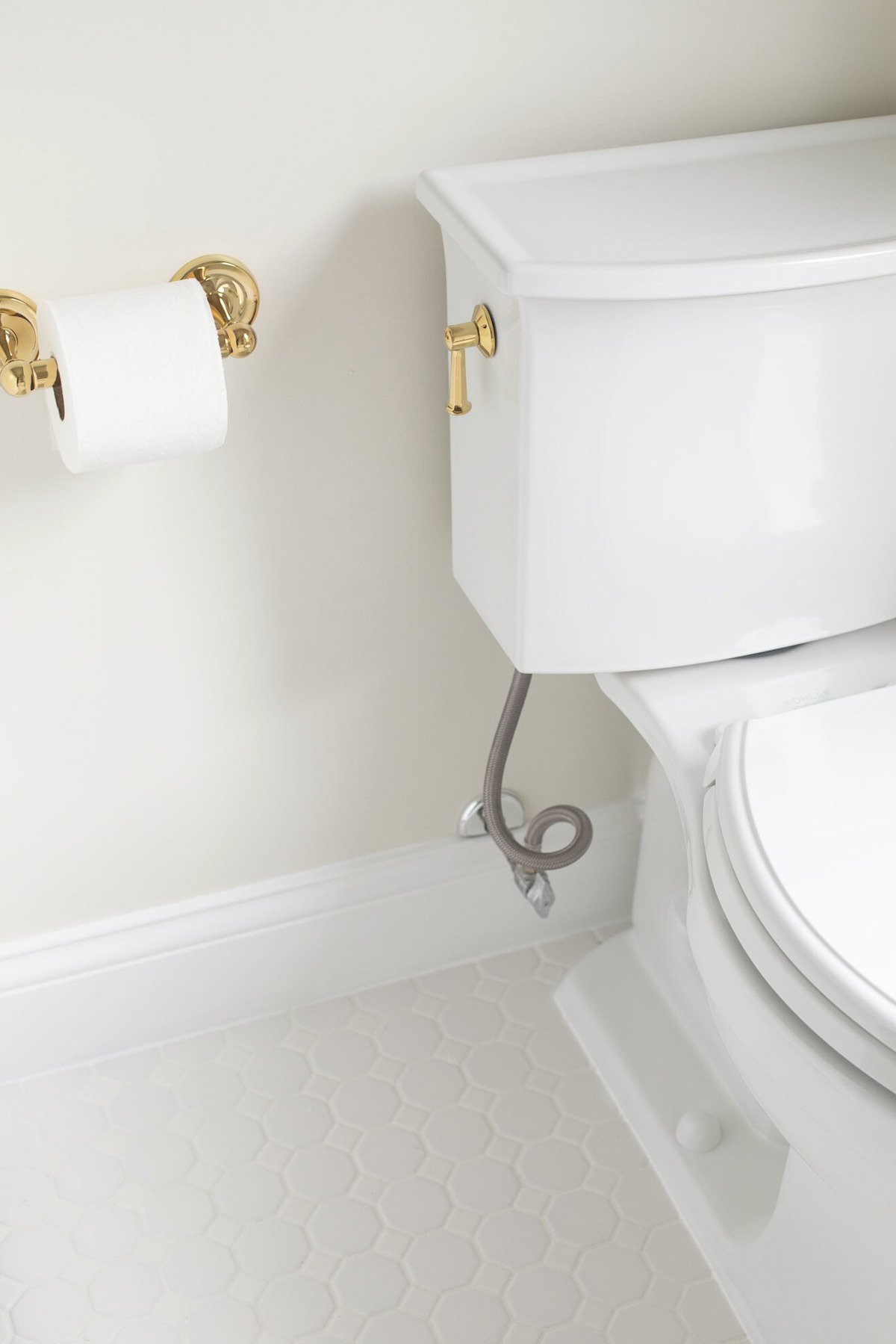
Frequently Asked Questions
Yes, wood trim takes white paint very well. To prepare, use a liquid deglosser to rough up the surface a bit, then do a coat of primer using Kilz or Zinzer. Your wood trim will be ready for white paint!
I like to use a high-quality trim paint, such as Sherwin Williams Pro-Classic in semi-gloss. It is goes on smoothly, dries to a beautiful finish, and is durable and easy to clean. Other brands also have good-quality trim paints.
It is entirely up to you! Most whites aren’t actually a true u0022whiteu0022 to begin with. They are either warm or cool, with different undertones that affect their color.
Cool whites (with blue/grey undertones) appear more crisp and are often well suited to modern design styles. Warm whites (with yellow/greige undertones) appear creamy and soft. Typically, if your wall color is a cool color (such as blue, grey, purple, etc.) then you should consider using a cool or neutral white.
If your walls are a warm color, however, they would look lovely with creamy off white trim.
Yes, you can paint wood trim without sanding first! First, if it has a glossy finish, I recommend using a liquid deglosser to remove some of the shine. This roughs up the finish just enough to give the paint something to adhere to. Then use a good-quality primer, such as Kilz or Zinzer, to cover the wood grain. Finally, paint with a high-quality semi-gloss white paint.
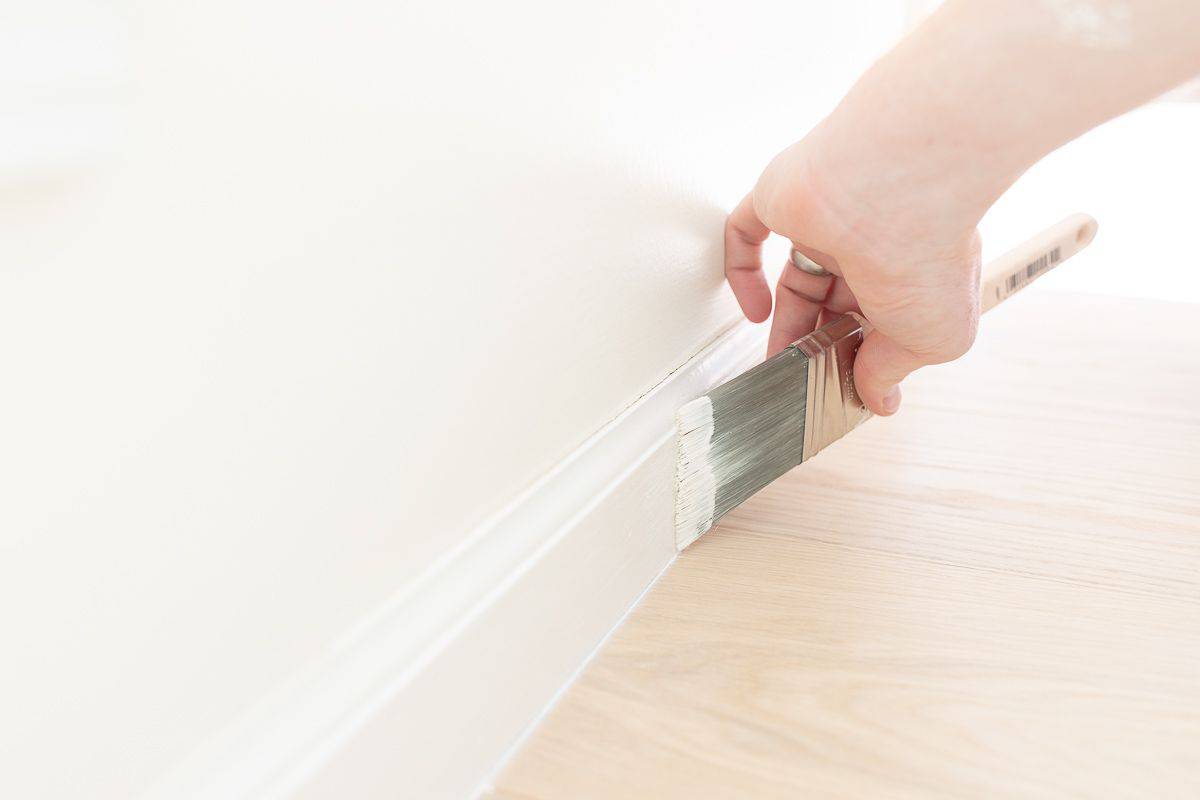

Amazon Storefront
Follow my Amazon Storefront to find more holiday looks for less.
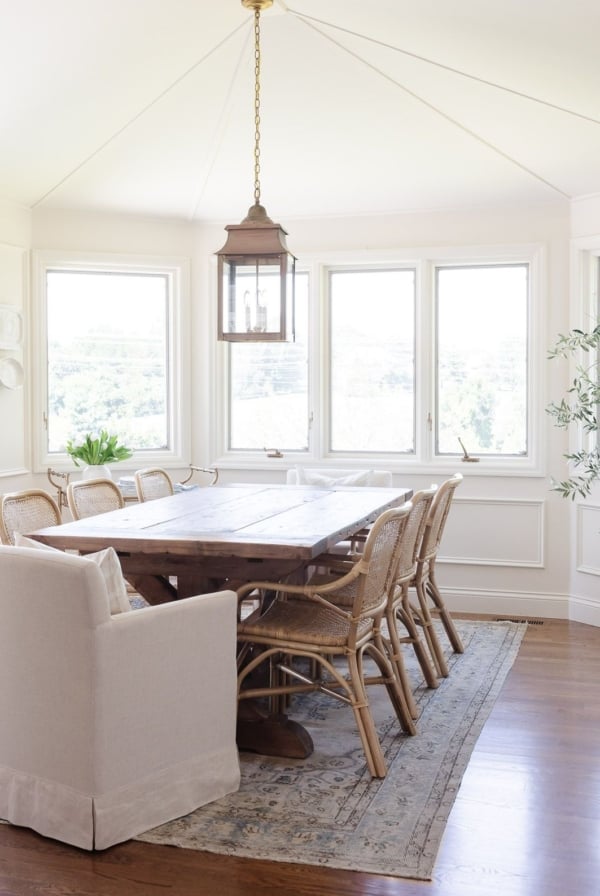
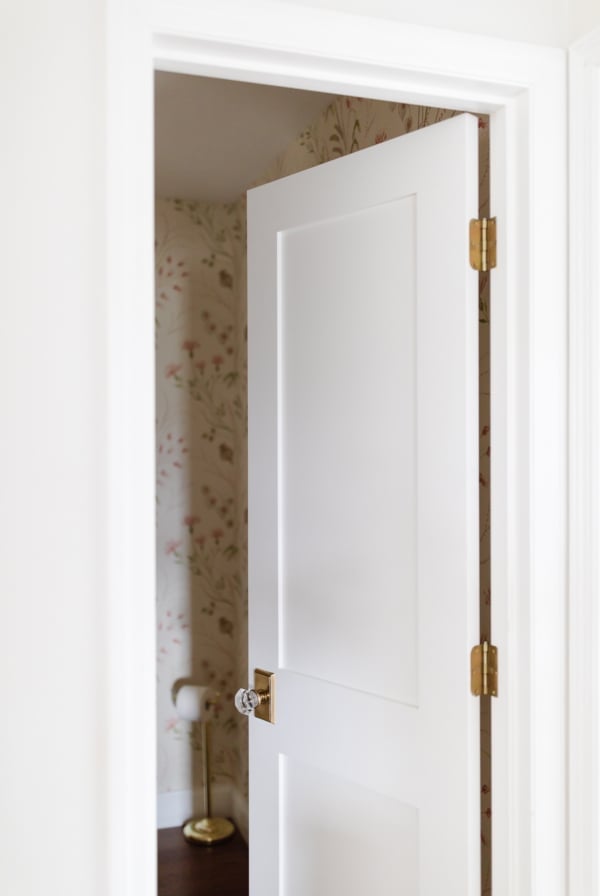
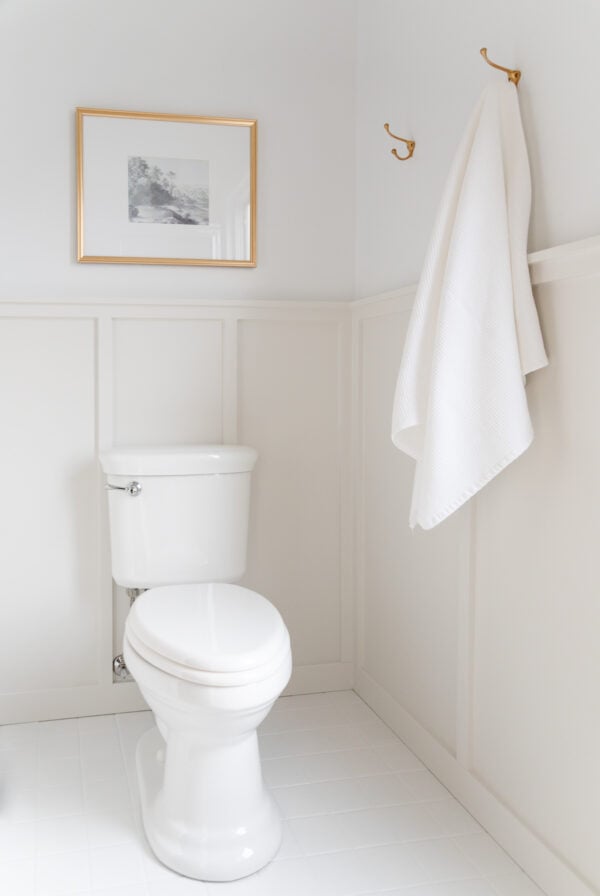
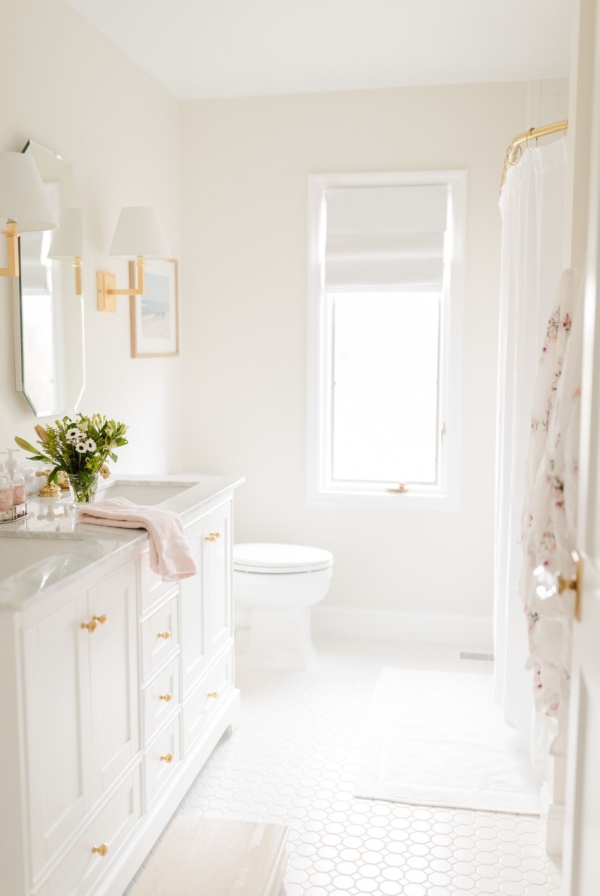
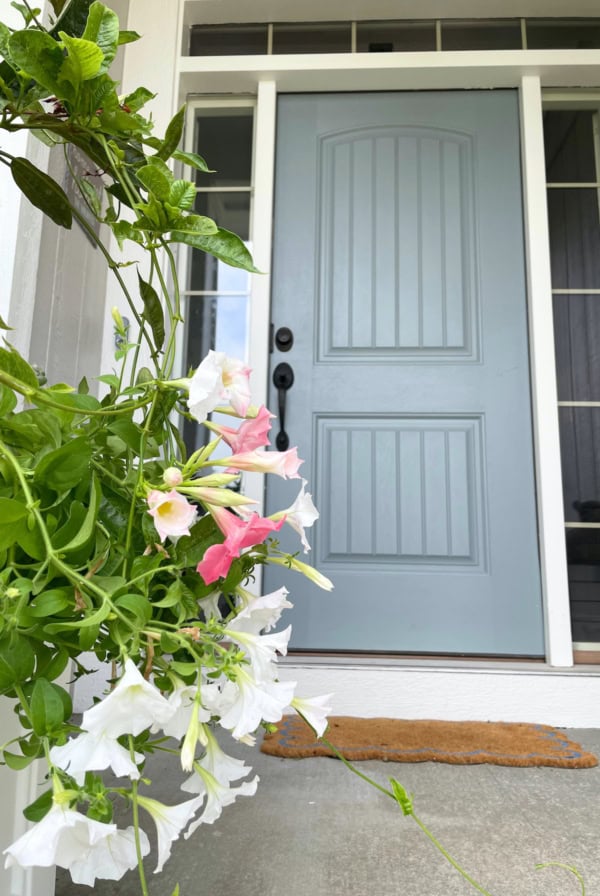
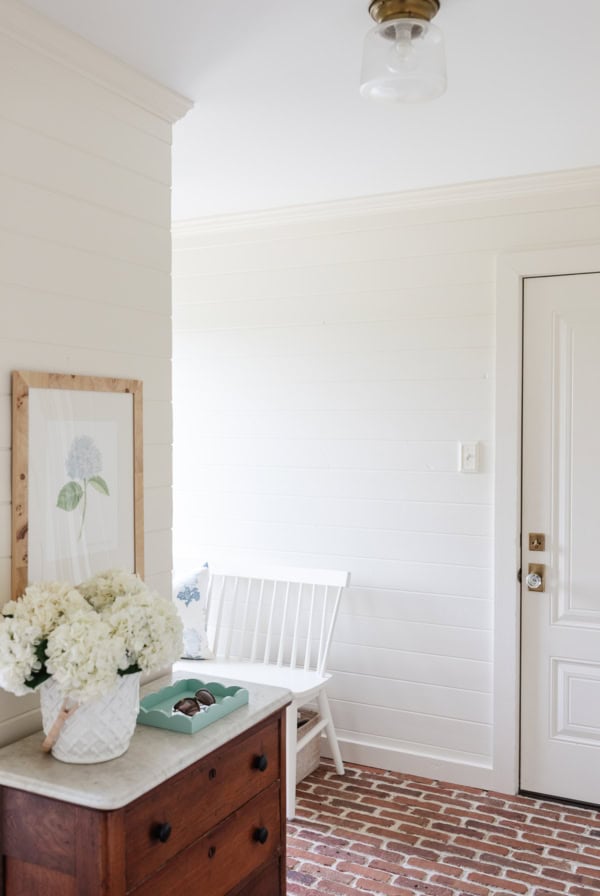







What color trim color would you recommend with Magnolia Silos White (warm white). Thanks!
Hi Amy,
If you want some contrast, I’d try Benjamin Moore Simply White. You can also use the same color on your trim and walls, just change the sheen. It’s one of my favorite tricks – read more in our guide to Painting Walls and Trim the Same Color.
Enjoy,
Julie
Hello! I see you recommend an off white trim color with a warm white wall. What trim color do you suggest I use with soft chamois on the walls in a room that gets a ton of natural light? Thanks!
Hi! Thanks for all this great information. I have the same question as Amber. You’ve sold me on the soft chamois, but I can’t find what specific color you’ve paired so beautifully with it. Help please! 🙂
Hi Lisa,
If you want some good contrast against the Soft Chamois, I’d go with SW High Reflective White (also called Ultra White). It’s the closest thing they have to an un-tinted white trim color.
Another great option is SW Extra White – it’s not quite as bright as the ones above, but still a little bit of contrast. You might also look into painting the walls and trim the same color – or simply lightening the Soft Chamois by about 50%, to ensure you’re getting the right tone for the trim. I hope that helps!
Julie